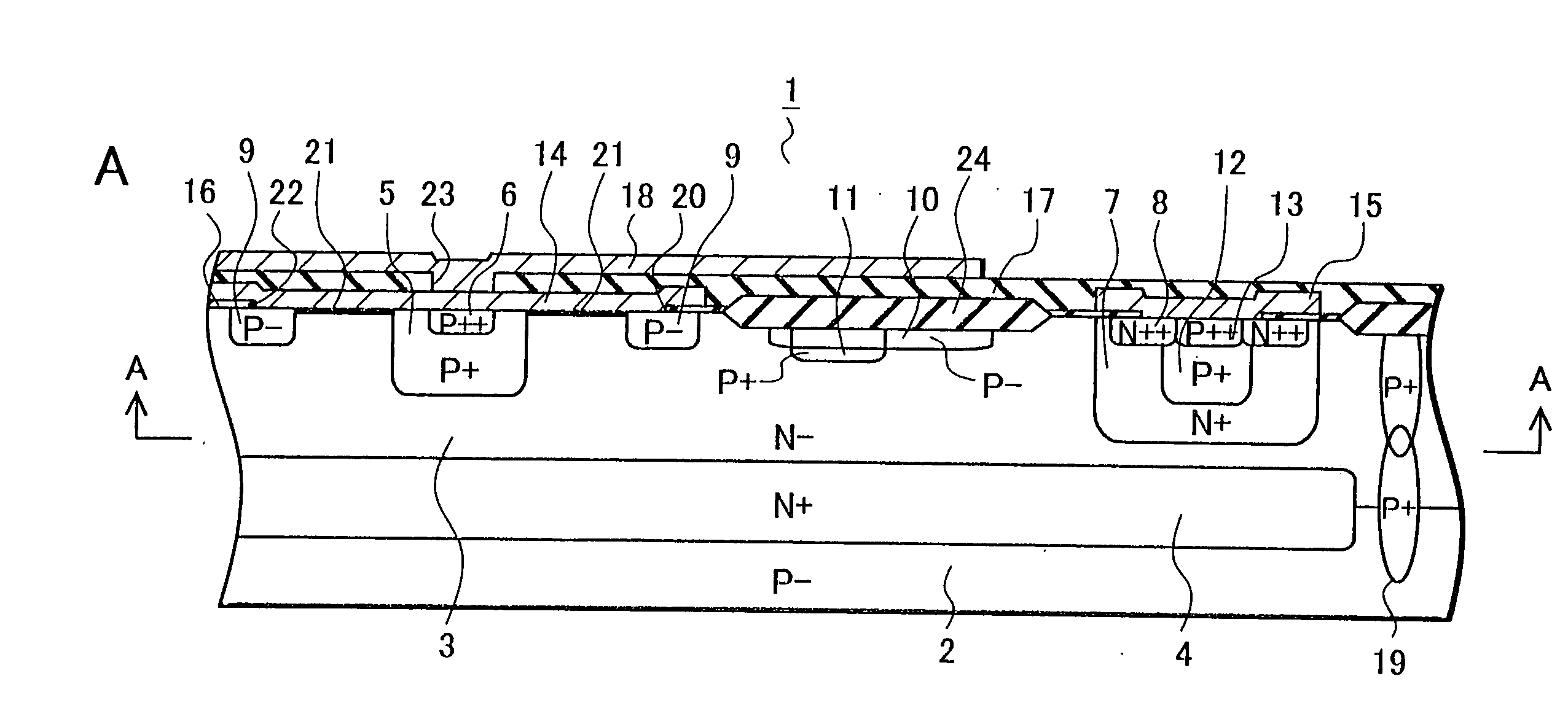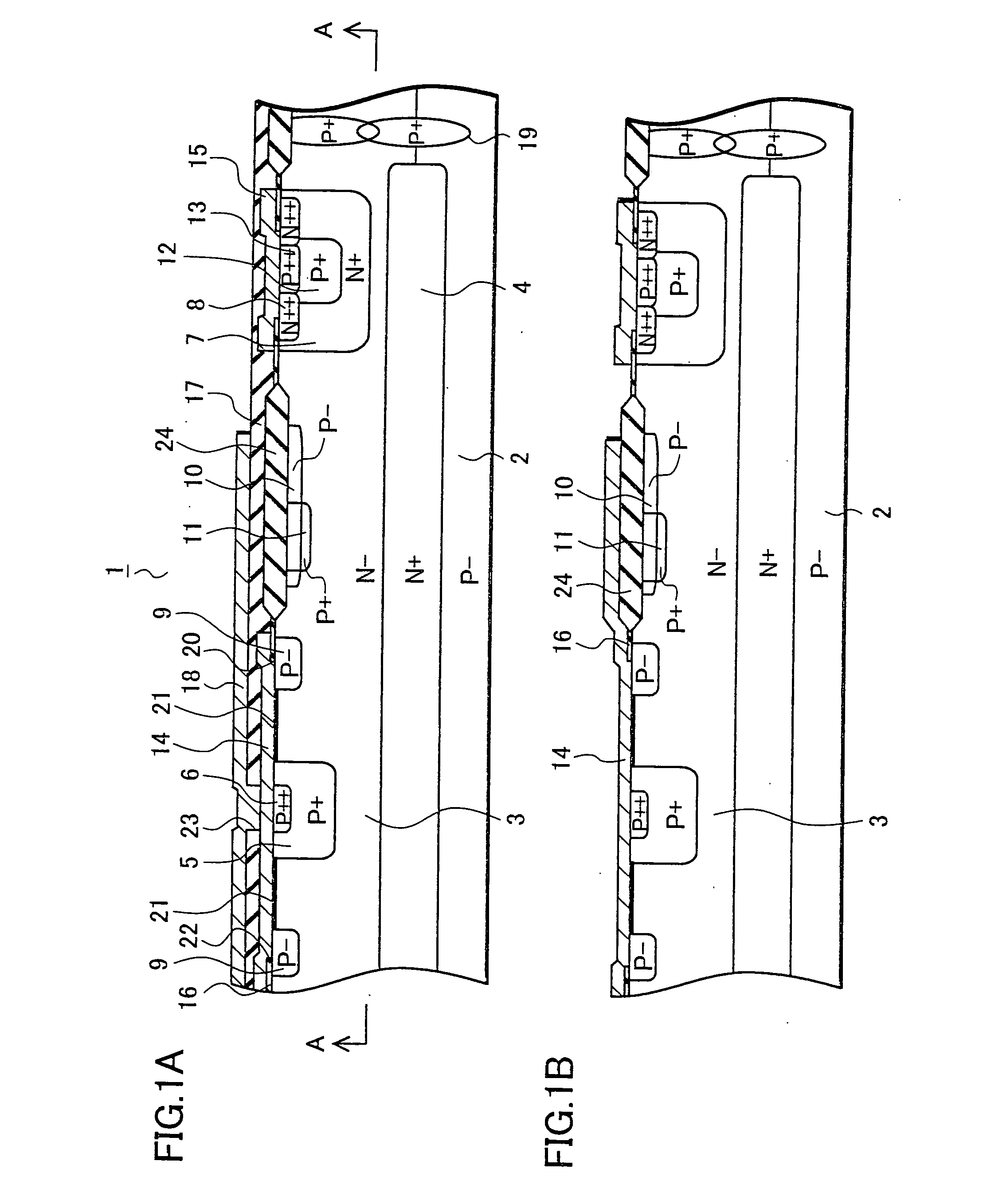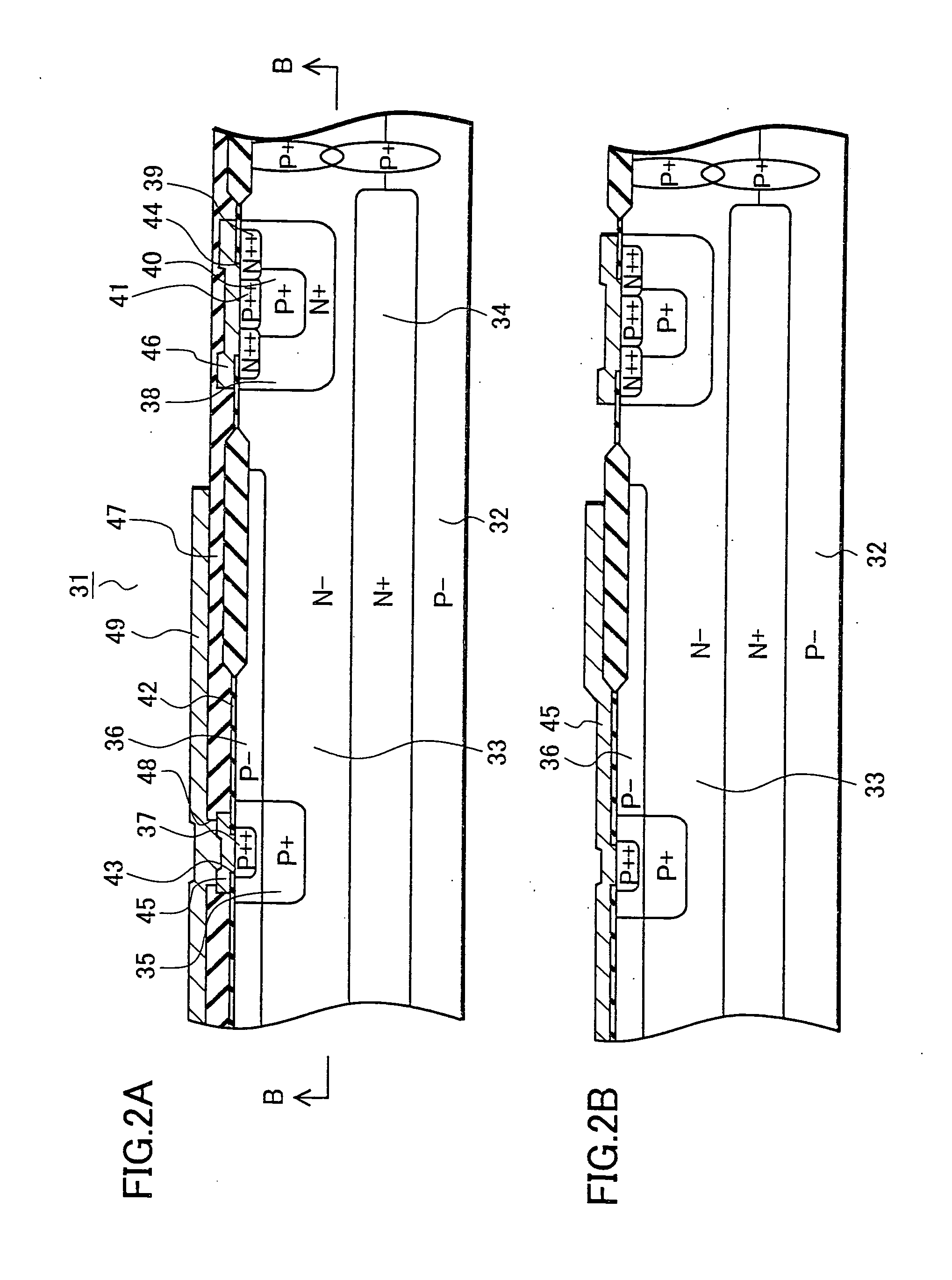Semiconductor device
a technology of semiconductors and diodes, applied in solid-state devices, instruments, printing, etc., can solve the problems of difficult to achieve a desired withstand voltage characteristic, difficult to reduce an on-resistance value, and excessive storage of minority carriers (holes) of free carriers, so as to prevent the concentration of electric fields, reduce the change in the curvature of depletion layers, and improve the withstand voltage characteristic of protection diodes
- Summary
- Abstract
- Description
- Claims
- Application Information
AI Technical Summary
Benefits of technology
Problems solved by technology
Method used
Image
Examples
Embodiment Construction
[0028] The following will specifically explain a semiconductor device according to one embodiment of the present invention with reference to FIGS. 1 to 7. FIG. 1A and FIG. 1B are cross-sectional views each explaining a protection diode according to one embodiment of the present invention. FIG. 2A and FIG. 2B are cross-sectional views each explaining a PN diode according to the embodiment of the present invention. FIG. 3 is a view explaining a forward voltage (Vf) of each of the protection diode and a PN diode according to the embodiment of the present invention. FIG. 4 is a view explaining a circuit into which the protection diode is incorporated according to the embodiment of the present invention. FIG.5 is a view explaining a parasitic capacitance value of each of the protection diode and the PN diode according to the embodiment of the present invention. FIG. 6A is a view explaining an electric potential distribution of the protection diode in a reverse bias state according to the...
PUM
 Login to View More
Login to View More Abstract
Description
Claims
Application Information
 Login to View More
Login to View More - R&D
- Intellectual Property
- Life Sciences
- Materials
- Tech Scout
- Unparalleled Data Quality
- Higher Quality Content
- 60% Fewer Hallucinations
Browse by: Latest US Patents, China's latest patents, Technical Efficacy Thesaurus, Application Domain, Technology Topic, Popular Technical Reports.
© 2025 PatSnap. All rights reserved.Legal|Privacy policy|Modern Slavery Act Transparency Statement|Sitemap|About US| Contact US: help@patsnap.com



